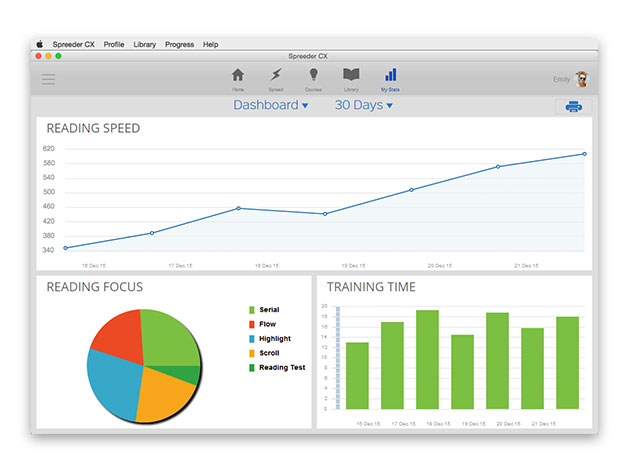
The aim of the present study is to measure the upper limits of reading rate beyond the limits imposed by comprehension. Thus, reading rate adapts to the goals of the observer however, most of the time individuals read at the rauding rate. Furthermore, when the goal is to find a target word in a text (visual scanning), the rate increases up to 600 wpm. Vice versa, higher rates may be achieved if the task requires skimming to find transposed words in a sentence (i.e., “ Horse the trotted toward” instead of “ The horse trotted toward”), with readers reaching a speed of 450 wpm. If the reader’s aim is to learn, the rate does not exceed 200 wpm, and will be even slower if memorizing is required (about 140 wpm). According to Carver, readers may slow down or speed up their reading rate at the expense of some of the cognitive components involved in achieving different goals. Carver created the term “ rauding” to indicate the processing by which reading and listening (or rauding) lead to the ability to understand what has been read. The most efficient comprehension was obtained at the same optimal rate of 300 wpm for both reading and listening. Carver (1992) proposed that with long practice reading approaches an optimal rate of about 300 words per minute (wpm) and simultaneously enables orthographic decoding, pronunciation and comprehension of meaning. Literate adults read with almost perfect accuracy at an impressive speed, optimizing each of the processes and performing them in parallel. It takes many years to master this skill and during this long period of training each of the components improves substantially, showing specific learning effects.


Rather, we focus on the perceptual, exploratory, memory and contextual components imposing an upper bound on reading speed.
7 SPEED READING LICENSE 2014 FULL
This study does not address the full experience of reading nor it speaks about text comprehension. Reading is a rich experience providing knowledge, emotions and in some cases a sense of beauty. Reading aloud is a complex task that involves several cognitive and sensory-motor subcomponents which range from feature detection to the comprehension of meaning and the pronunciation of words. Results reconcile differences in reading rates reported by different laboratories and thus provide suggestions for targeting different components of reading rate. Overall, data indicate a speed limit of 300 wpm, which corresponds to the time needed for eye movement execution, i.e., the most time consuming mechanism. Finally, eye movements imposed an upper limit on RR (around 300 wpm). The semantic context contributed to reading speed only by a factor of 1.4. When the number of stimuli exceeded the short-term memory span, RR decreased to 800 wpm. When the decoding process was isolated, RR approached values of 1200 wpm.


The presence of a mask caused a steep decline in reading rate, with an estimated masking cost of about 200 wpm. In six experiments we investigated the role of many different perceptual and cognitive variables. The present study investigated the origins of these notable differences in RSVP reading rate (RR). This discrepancy is likely due to different recording methods and to the different perceptual and cognitive processes involved in specific test conditions. Adults read at high speed, but estimates of their reading rate vary greatly, i.e., from 100 to 1500 words per minute (wpm).


 0 kommentar(er)
0 kommentar(er)
